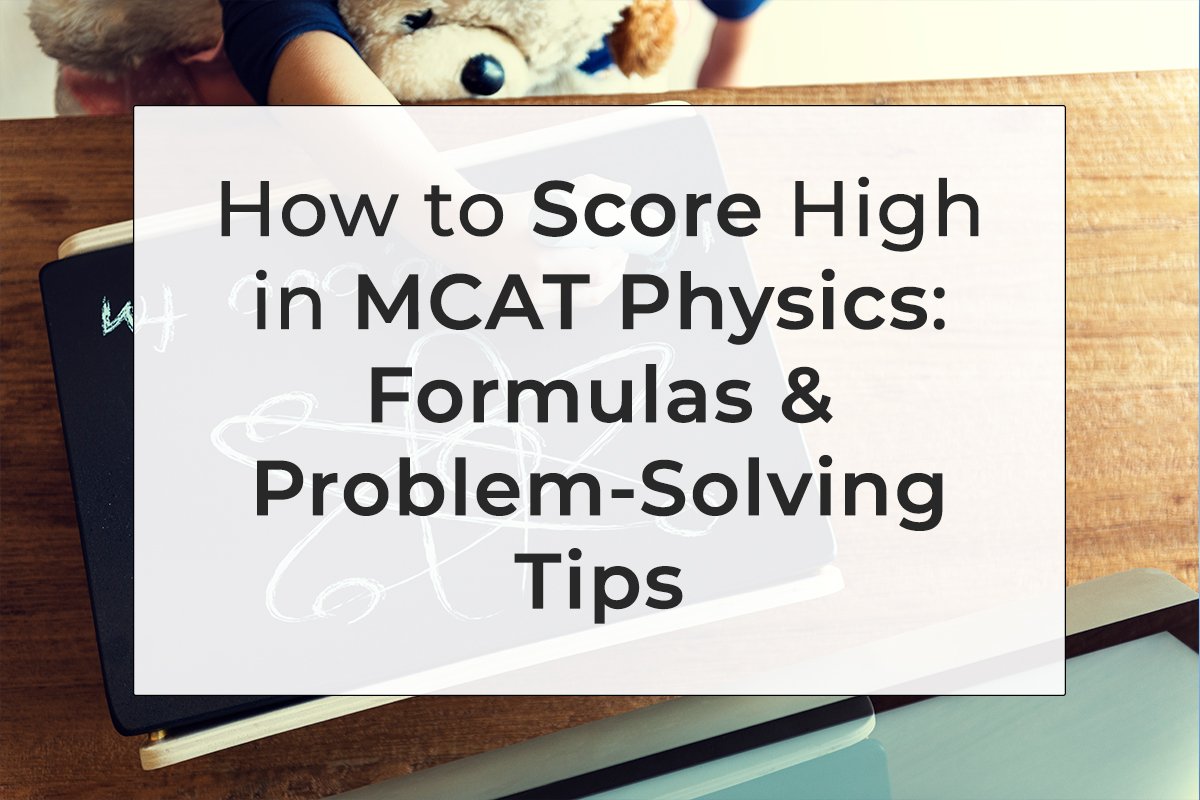How to Score High in MCAT Physics: Formulas & Problem-Solving Tips
Physics on the MCAT requires a strong grasp of key formulas and efficient problem-solving techniques. Since the MCAT is a reasoning-based exam, understanding concepts is more important than pure memorization. Here’s how to master high-yield MCAT Physics topics and maximize your score.
1. High-Yield MCAT Physics Topics
While the MCAT does not require advanced physics, certain fundamental principles appear frequently:
Kinematics & Dynamics – Motion, velocity, acceleration, Newton’s Laws
Work, Energy & Power – Conservation of energy, work-energy theorem
Fluids & Thermodynamics – Bernoulli’s equation, pressure, buoyancy, heat transfer
Electrostatics & Magnetism – Coulomb’s Law, electric fields, circuits, right-hand rule
Waves & Optics – Sound waves, Doppler effect, light refraction, mirrors & lenses
2. Essential MCAT Physics Formulas
Here are some must-know equations:
Kinematics:
v = v 0 + a t
x= x0 + v0t+ 1/2at^2Newton’s Second Law:
F = maWork & Energy:
W = Fd cos(θ)
KE = (1/2)mv²
PE = mghFluids:
P = F / A
Q = A * v (Continuity equation)Circuits:
V=IR (Ohm’s Law)
P=IV
Understanding how and when to apply these formulas is key to efficient problem-solving on test day.
3. Problem-Solving Strategies for MCAT Physics
Understand the Concept First – The MCAT tests reasoning over memorization; make sure you grasp the “why” behind equations.
Use KOTC’s Adaptive Q-Bank – Practice with realistic MCAT-style physics questions to enhance application skills.
Break Down Complex Problems – Identify given values, unknowns, and relevant formulas.
Use Dimensional Analysis – Units help verify answers and eliminate incorrect choices.
Recognize Commonly Tested Tricks – Learn how variables change when manipulating equations.
Master Graphs & Data Interpretation – The MCAT often presents physics in passage-based formats with data analysis.
4. Avoid These Common Mistakes
Plugging Numbers Too Soon – Solve algebraically first before substituting values.
Skipping Conceptual Questions – The MCAT tests reasoning through experimental setups.
Ignoring Estimation Techniques – Approximate answers save time on test day.
Overcomplicating Problems – Many physics questions can be solved using simple relationships.
Final Thoughts
Scoring high in MCAT Physics requires a solid grasp of core formulas, strategic problem-solving, and consistent practice. By leveraging King of the Curve’s resources, you can simplify physics concepts and enhance test-day performance.
Frequently Asked Questions (FAQs)
-
Aim for 4-6 focused hours, ensuring you incorporate breaks to avoid burnout.
-
Practice mindfulness techniques, take practice exams under realistic conditions, and maintain a balanced lifestyle.
-
Set short-term goals, seek support from mentors, and reward yourself for small achievements.
-
Regular exercise improves focus, reduces stress, and enhances overall mental clarity.
-
KOTC offers personalized learning tools, gamification features, and adaptive question banks to help students stay on track without burnout.


